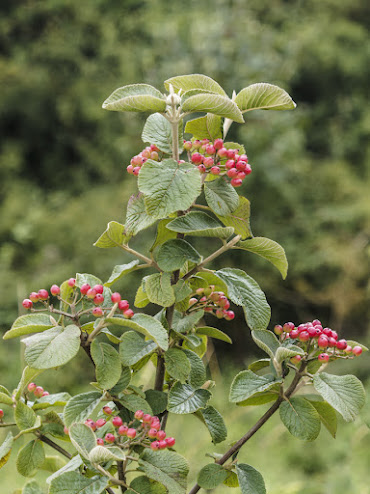On a cool overcast day, we met at Stockbridge Down, a National Trust managed SSSI comprising a chalky downland habitat with an iron-age hill fort at its summit. We started with good views of a Hummingbird Hawk-moth feeding on Buddleia in the car park.
 |
|
Hummingbird Hawk-moth © Richard Smith |
Aside from assorted Corvid, nothing was flying in the mild, damp conditions as we walked slowly along the western edge of the Down. Amongst the bramble and rabbit burrows, numerous wildflowers and plants were found beside the track. Wild Basil and Wild Marjoram grew profusely along with Common Toadflax, Common Knapweed (rayed form), Common Agrimony, Birds-foot Trefoil, Lady’s Bedstraw, Wild Mignonette and Ragwort. Cinnabar moth caterpillar and Common Soldier Beetle were found on several of the Ragwort, and as the day warmed, we had our first views of Chalk Hill Blue and Gatekeeper butterflies. A Chiffchaff was heard and seen, Eyebright and a few Harebells were added to the plant list, and a Kentish Snail was found attached to a grass stem.
.JPG) |
Chalk Hill Blues © Andy & Sue Skarstein |
 |
Wild Parsnip with Marjoram © Richard Coomber |
 |
Wayfaring Tree fruits © Richard Smith |
Descending the western edge of the Down through areas of coppiced Hazel that were covered with cobnuts this year, we noted a large Yew, Self-heal, Red Bartsia, Musk Thistle, Yarrow, Mullein sp and Rosebay Willowherb. Signs of rapid regeneration of recently cleared areas (to support butterfly habitat) were also noted. Returning towards the car park along The Gallops, an area formerly used to train racehorses, more butterfly emerged including a Large White. Common Carpet, Willow Ermine and Mint Moth were also found. Musk Mallow, Herb Bennet and Fairy Flax were added to the botany count, and a Yellowhammer was heard but not seen.
.JPG) |
Common Carpet © Andy and Sue Skarstein |
 |
Mint Moth © Richard Smith |
 |
Yellowhammer - male with food © Richard Smith |
 |
| Our route © Crown copyright 2023 Ordnance Survey. Media 006/23. The licence is valid until 31 December 2023 |
References
.JPG)